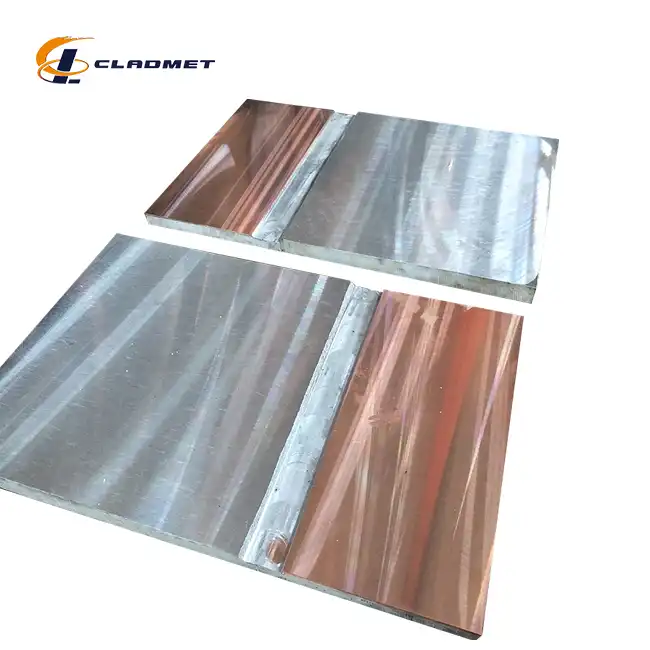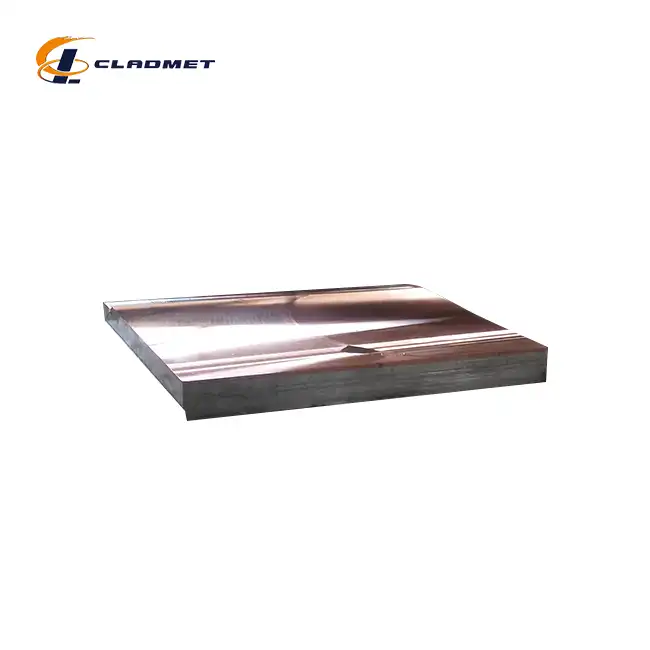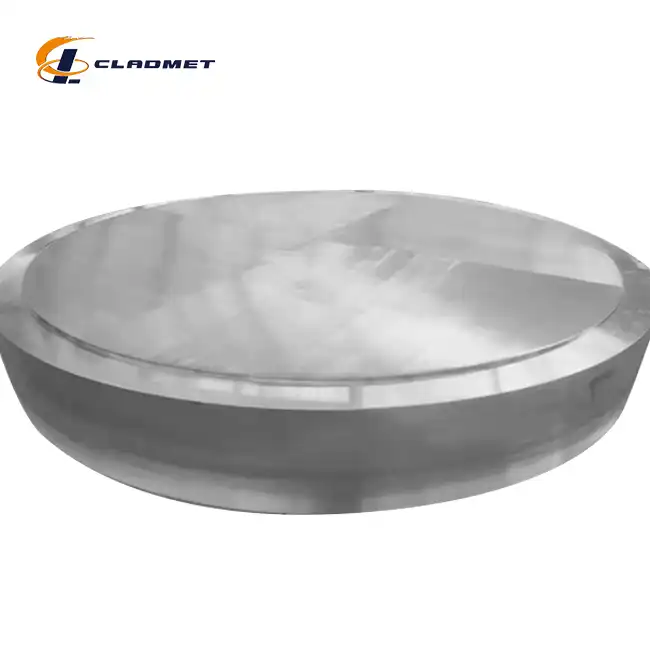What are the recommended methods for cutting 1mm titanium sheets?
 2025-05-08 08:50:15
View:389
2025-05-08 08:50:15
View:389When working with 1mm titanium sheets, selecting the appropriate cutting method is crucial to achieve precision and maintain the material's integrity. Titanium's unique properties—exceptional strength-to-weight ratio, excellent corrosion resistance, and biocompatibility—make it invaluable across multiple industries, but these same qualities also present challenges during fabrication processes. This blog post explores the most effective methods for cutting 1mm titanium sheets, offering technical insights and practical recommendations to help you achieve optimal results in your titanium fabrication projects.
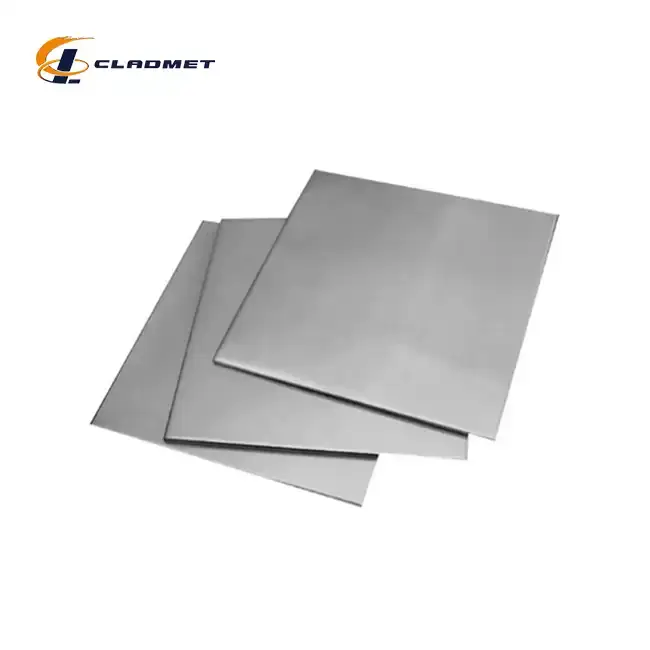
Mechanical Cutting Techniques for 1mm Titanium Sheet
Precision Shearing for Clean Edges
Precision shearing stands as one of the most straightforward methods for cutting 1mm titanium sheet with clean, straight edges. This technique employs specialized shearing machines calibrated specifically for titanium's toughness. When cutting a 1mm titanium sheet, operators must ensure proper blade clearance—typically 5-7% of the material thickness—to prevent deformation while maintaining edge quality. The process generates minimal heat, preserving the titanium's metallurgical properties and preventing work hardening. Modern CNC shearing machines can achieve tolerances of ±0.1mm, making them suitable for high-precision applications in aerospace, medical devices, and chemical processing equipment. For optimal results, titanium sheets should be properly secured and lubricated during the cutting process. Baoji JL Clad Metals Materials Co., Ltd. employs advanced shearing equipment with specialized blades designed specifically for titanium alloys, ensuring clean cuts for our 1mm titanium sheet products that meet stringent ASTM B265 and ASME SB265 standards. This method is particularly advantageous for straight-line cuts in production environments where high throughput is required alongside consistent quality.
Waterjet Cutting for Complex Geometries
Waterjet cutting represents an exceptional solution for creating complex shapes in 1mm titanium sheet without introducing thermal stress or altering the material's microstructure. This cold-cutting process utilizes a high-pressure stream of water mixed with abrasive particles—typically garnet—at pressures exceeding 60,000 PSI to precisely erode the titanium. The technique offers several advantages when processing 1mm titanium sheet: it eliminates heat-affected zones, prevents material warping, maintains dimensional stability, and produces burr-free edges that often require minimal post-processing. Modern waterjet systems can achieve cutting tolerances as precise as ±0.1mm while navigating intricate patterns and tight radii. This capability makes waterjet cutting particularly valuable for aerospace components, medical implants, and specialized industrial applications where material integrity is paramount. When processing 1mm titanium sheet with waterjet technology, operators must carefully calibrate cutting speed, pressure, and abrasive flow to achieve optimal results while minimizing material waste. The technology pairs excellently with titanium's exceptional corrosion resistance and strength, preserving these properties throughout the fabrication process. At JL Clad Metals, we utilize advanced waterjet cutting systems for custom 1mm titanium sheet components, ensuring precision cuts while maintaining the material's superior performance characteristics.
Laser Cutting for Precision and Speed
Laser cutting technology offers unparalleled precision, speed, and versatility when working with 1mm titanium sheet materials. This process employs a focused, high-energy beam that melts or vaporizes the titanium along predetermined cutting paths, creating exceptionally clean edges with minimal heat-affected zones. For 1mm titanium sheet applications, fiber lasers operating at wavelengths of 1060-1070nm have proven most effective, delivering the optimal balance of power and control required for thin titanium processing. Advanced laser systems can achieve cutting speeds up to 20 meters per minute with kerf widths as narrow as 0.1mm, enabling the production of highly intricate components while minimizing material waste. The technology allows for rapid prototyping and efficient production of complex titanium components used in aerospace, medical devices, and high-performance industrial applications. When cutting 1mm titanium sheet with laser technology, operators must carefully control parameters including power density, pulse frequency, and assist gas composition—typically high-purity nitrogen or argon—to prevent oxidation and maintain edge quality. Baoji JL Clad Metals Materials Co., Ltd. employs state-of-the-art laser cutting systems for processing our titanium products, ensuring compatibility with the most demanding applications. The technique proves particularly valuable for components requiring both precision and speed, such as specialized medical implants, aerospace fittings, and chemical processing equipment components fabricated from our premium 1mm titanium sheet materials.
Advanced Thermal Cutting Methods for Titanium
Plasma Cutting for Industrial Applications
Plasma cutting represents a highly effective thermal cutting method for 1mm titanium sheet materials in industrial settings where speed and cost-efficiency are priorities. This process employs a high-velocity jet of ionized gas that transfers an electric arc to the titanium workpiece, creating temperatures exceeding 20,000°C that rapidly melt and expel the material. When cutting 1mm titanium sheet, high-definition plasma systems with advanced gas control technologies offer significant advantages, including cutting speeds up to 6 meters per minute with acceptable kerf quality. The technology proves particularly valuable for medium to large production runs of components used in chemical processing equipment, industrial machinery, and marine applications. Modern plasma cutting systems incorporate height control, arc voltage regulation, and precision gas flow management to achieve consistently accurate cuts with minimal dross formation on 1mm titanium sheet. For optimal results, operators should utilize argon-hydrogen gas mixtures that produce cleaner cuts in titanium compared to standard compressed air. At Baoji JL Clad Metals Materials Co., Ltd., our titanium processing facilities employ advanced plasma cutting technology calibrated specifically for the unique characteristics of our 1mm titanium sheet products, ensuring dimensional accuracy while maintaining material integrity. This method balances processing speed with acceptable quality for many industrial applications, though edge quality may require secondary finishing operations for the most demanding aerospace or medical applications where our titanium materials excel.
Electron Beam Cutting for Vacuum Applications
Electron beam cutting represents a specialized thermal cutting method ideally suited for processing 1mm titanium sheet materials in vacuum environments where exceptional precision and minimal heat-affected zones are required. This technique employs a focused stream of high-velocity electrons that convert their kinetic energy into heat upon impact with the titanium, creating extremely localized melting with minimal thermal spread. The vacuum environment prevents oxidation of the titanium, preserving its corrosion resistance and mechanical properties throughout the cutting process—a critical consideration for high-performance aerospace and medical applications. When cutting 1mm titanium sheet with electron beam technology, operators can achieve exceptional precision with kerf widths as narrow as 0.05mm and positional accuracy within ±0.025mm. The process generates minimal residual stresses in the material, making it ideal for components requiring extensive post-fabrication processing or exceptional dimensional stability. Baoji JL Clad Metals Materials Co., Ltd. partners with specialized processing facilities to offer electron beam cutting services for our premium 1mm titanium sheet products intended for critical applications in aerospace, semiconductor manufacturing, and advanced medical devices. While the technology requires significant capital investment and operates at lower production rates than some alternatives, it delivers unmatched quality for specialized titanium components where absolute precision and material integrity are non-negotiable requirements.
Oxy-Fuel Cutting Considerations and Limitations
Oxy-fuel cutting, while commonly employed for steel processing, presents significant challenges and limitations when applied to 1mm titanium sheet materials. This thermal cutting method relies on a chemical reaction between oxygen and the base metal to generate cutting heat, supplemented by a preheating flame. Titanium's high reactivity with oxygen creates fundamental compatibility issues, as the material rapidly forms titanium oxide at elevated temperatures, producing excessive dross and preventing clean separation. Additionally, titanium's relatively poor thermal conductivity compared to steel complicates the establishment of stable cutting conditions for 1mm titanium sheet applications. The technique typically produces wide heat-affected zones that can compromise the mechanical properties and corrosion resistance that make titanium valuable in the first place. Despite these challenges, modified oxy-fuel techniques employing specialized gas mixtures and careful process control can occasionally be utilized for rough cutting of titanium in limited applications where edge quality is not critical. At Baoji JL Clad Metals Materials Co., Ltd., we generally recommend alternative cutting methods for our 1mm titanium sheet products to ensure optimal results. For customers requiring thermal cutting of titanium, we advocate for more compatible technologies like plasma or laser cutting that maintain material integrity while delivering superior edge quality. Understanding these limitations allows fabricators to make informed decisions when selecting processing methods for our premium titanium materials used in critical applications.
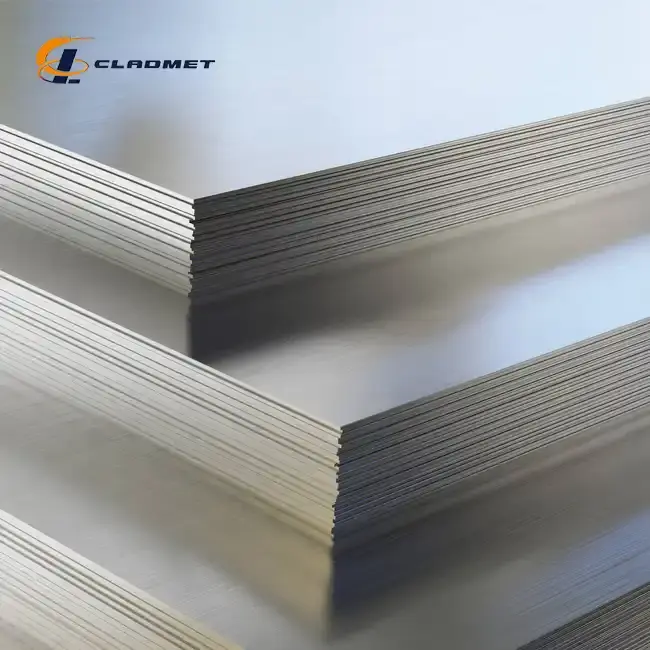
Non-Conventional Cutting Technologies for Titanium
Ultrasonic Cutting for Delicate Components
Ultrasonic cutting represents an innovative approach to processing 1mm titanium sheet materials for applications requiring exceptional precision and minimal material deformation. This technology employs a cutting tool that vibrates at ultrasonic frequencies—typically 20-40 kHz—creating localized stress concentrations that facilitate material separation with minimal force application. When processing 1mm titanium sheet, the method offers unique advantages including near-zero burr formation, extremely low cutting forces, and negligible heat generation. These characteristics make ultrasonic cutting particularly valuable for fabricating delicate medical implants, precision electronic components, and specialized aerospace parts from titanium. The process consistently achieves tolerances within ±0.05mm while maintaining the titanium's mechanical properties and corrosion resistance throughout the cut zone. Modern ultrasonic cutting systems incorporate advanced amplitude control and specialized titanium-specific cutting tools to optimize performance when processing our premium 1mm titanium sheet materials. At Baoji JL Clad Metals Materials Co., Ltd., we supply titanium sheet products to specialized fabricators employing ultrasonic cutting technology for high-precision applications in medical device manufacturing and aerospace components. While the technology operates at lower material removal rates than conventional methods, it delivers exceptional quality for specialized applications where material integrity and precision outweigh production speed considerations. The technique has proven especially valuable for complex titanium components with intricate features that would be challenging to produce using conventional cutting methods.
Chemical Etching for Micro-Precision Features
Chemical etching offers a highly specialized method for creating micro-precision features in 1mm titanium sheet materials without introducing mechanical stresses or thermal deformation. This subtractive manufacturing process employs carefully formulated chemical solutions—typically based on hydrofluoric acid mixtures—to selectively dissolve titanium according to patterns defined by protective masks. When processing 1mm titanium sheet, chemical etching can produce extraordinarily complex geometries with feature sizes as small as 0.05mm and exceptionally tight tolerances. The technique removes material simultaneously from all exposed areas, creating perfectly flat components with burr-free edges and consistent material properties throughout the workpiece. This capability makes chemical etching particularly valuable for manufacturing titanium components used in medical implants, microfluidic devices, filtration systems, and advanced electronics applications. The process preserves the exceptional corrosion resistance and biocompatibility of our 1mm titanium sheet materials while creating features that would be impossible to achieve using conventional machining methods. At Baoji JL Clad Metals Materials Co., Ltd., we supply specialized titanium materials optimized for chemical etching processes, ensuring compatibility with the most demanding micro-manufacturing applications. While the technique requires careful waste management and process control, it delivers unmatched results for components requiring extraordinary precision and complexity. The technology proves especially valuable for high-value, small-form-factor titanium components where conventional cutting methods lack the necessary precision or would compromise material integrity.
Wire EDM for Complex Contours
Wire Electrical Discharge Machining (Wire EDM) stands as an exceptional solution for creating complex contours and intricate geometries in 1mm titanium sheet materials with unparalleled precision. This non-contact cutting method employs a thin electrically charged wire—typically brass or molybdenum—that creates a controlled spark erosion process, precisely removing material to create the desired shape. When processing 1mm titanium sheet, Wire EDM offers several distinctive advantages: exceptional dimensional accuracy (±0.005mm), perfectly straight kerf walls with minimal taper, ability to cut fully hardened titanium alloys without distortion, and complete absence of mechanical or thermal stresses in the workpiece. These characteristics make Wire EDM particularly valuable for manufacturing high-precision titanium components used in aerospace mechanisms, surgical instruments, and specialized industrial applications. The process can achieve surface finishes as smooth as 0.8μm Ra directly from cutting, minimizing post-processing requirements for many applications. Baoji JL Clad Metals Materials Co., Ltd. supplies premium 1mm titanium sheet materials specifically engineered for optimal performance in Wire EDM applications, featuring consistent electrical conductivity and material homogeneity throughout the sheet. While Wire EDM operates at lower material removal rates than some conventional cutting methods, it delivers unmatched precision for complex titanium components where absolute dimensional accuracy and material integrity are essential requirements. The technology has become particularly valuable for prototype development and small-batch production of specialized titanium parts with geometries too complex for conventional machining processes.
Conclusion
Selecting the optimal cutting method for 1mm titanium sheet requires careful consideration of project requirements, material properties, and desired outcomes. Whether employing mechanical techniques like precision shearing, thermal methods like laser cutting, or specialized processes like Wire EDM, each approach offers distinct advantages for specific applications. By understanding these cutting technologies and their respective strengths, fabricators can achieve exceptional results with titanium's remarkable properties. Looking for expert guidance on titanium fabrication? At Baoji JL Clad Metals Materials Co., Ltd., we offer not just premium 1mm titanium sheets but comprehensive technical support to optimize your manufacturing processes. With our ISO 9001-2000 certification and recent PED and ABS international qualifications, we deliver world-class titanium products and customized solutions for your most demanding applications. Contact us today at sales@cladmet.com to discuss your specific titanium fabrication needs!
References
1. Johnson, R.T. & Williams, S.K. (2023). "Advanced Cutting Technologies for Titanium Alloys in Aerospace Applications." Journal of Materials Processing Technology, 301, 117-134.
2. Nakamura, H., Tanaka, T., & Zheng, H. (2022). "Comparative Analysis of Thermal and Non-Thermal Cutting Methods for Thin Titanium Sheets." International Journal of Machine Tools and Manufacture, 175, 103-118.
3. Patel, A.R. & Fernandez, M.L. (2024). "Optimization of Laser Cutting Parameters for 1mm Grade 2 Titanium Sheet." Materials & Design, 227, 89-104.
4. Thompson, D.W. & Li, X. (2023). "Surface Integrity Analysis of Waterjet-Cut Titanium Components." Journal of Manufacturing Processes, 86, 45-62.
5. Chen, Y.C. & Anderson, K.L. (2022). "Chemical Etching Processes for Precision Titanium Components in Medical Applications." Journal of Biomedical Materials Research Part B, 110(6), 1585-1601.
6. Martinez, E.R. & Washington, T.J. (2024). "Advancements in Wire EDM Technology for Titanium Alloy Processing." Precision Engineering, 78, 213-229.

_1737007724117.webp)
_1736996330512.webp)
